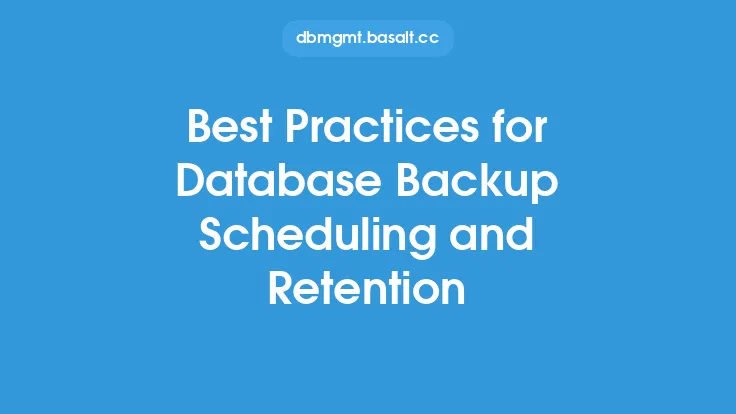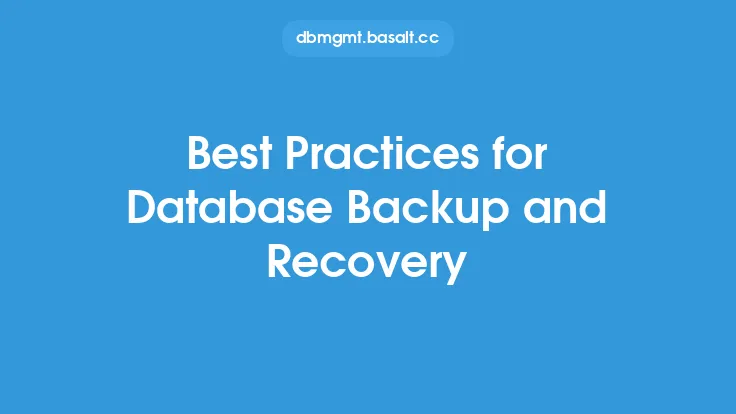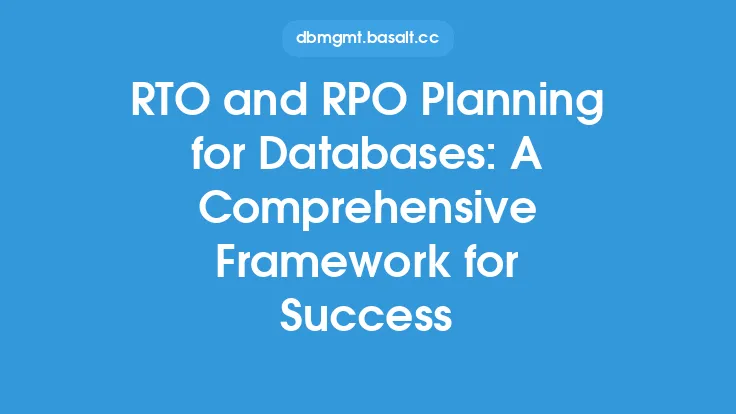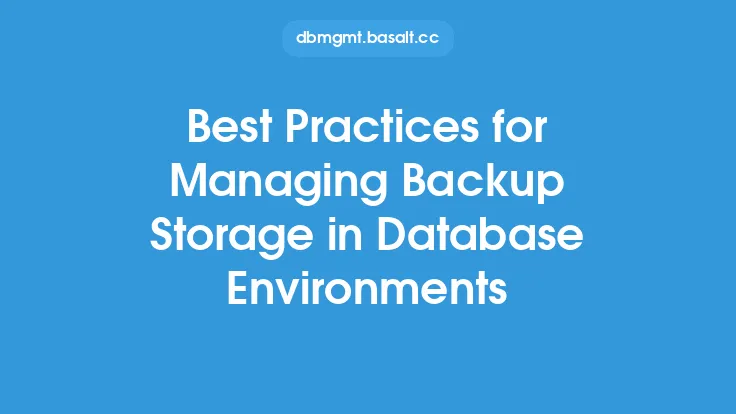When it comes to database backup and recovery, two crucial metrics that determine the effectiveness of a disaster recovery plan are Recovery Time Objective (RTO) and Recovery Point Objective (RPO). These metrics are essential in ensuring that an organization's database is restored to a functional state in a timely manner, minimizing data loss and downtime. In this article, we will delve into the best practices for implementing RTO and RPO in database backup and recovery, providing a comprehensive guide for database administrators and organizations seeking to optimize their disaster recovery strategies.
Introduction to RTO and RPO
RTO and RPO are two interconnected yet distinct metrics that are used to measure the effectiveness of a database backup and recovery plan. RTO refers to the maximum amount of time that an organization can afford to be without access to its database, while RPO refers to the maximum amount of data that can be lost in the event of a disaster. In other words, RTO is about how quickly the database needs to be restored, while RPO is about how much data can be lost before it becomes unacceptable.
Assessing RTO and RPO Requirements
To implement RTO and RPO effectively, organizations need to assess their specific requirements. This involves identifying the criticality of the database, the impact of downtime on business operations, and the tolerance for data loss. Database administrators should conduct a thorough analysis of the organization's business needs, including the type of data stored, the frequency of transactions, and the potential consequences of data loss. This assessment will help determine the optimal RTO and RPO for the organization, ensuring that the database backup and recovery plan aligns with business objectives.
Implementing RTO and RPO in Database Backup and Recovery
Implementing RTO and RPO in database backup and recovery involves several key steps. First, database administrators need to develop a comprehensive backup strategy that includes regular full and incremental backups, as well as transaction log backups. The backup strategy should be designed to meet the RPO, ensuring that the maximum amount of data loss is minimized. Next, the recovery process should be optimized to meet the RTO, ensuring that the database is restored quickly and efficiently. This may involve using techniques such as parallel recovery, online recovery, and automated recovery scripts.
Best Practices for RTO and RPO Implementation
To ensure effective implementation of RTO and RPO, several best practices should be followed. First, database administrators should regularly test and validate the backup and recovery process to ensure that it meets the RTO and RPO. This includes conducting regular disaster recovery drills and testing the recovery of critical data. Second, the backup and recovery process should be automated as much as possible, using tools and scripts to minimize manual intervention and reduce the risk of human error. Third, database administrators should monitor the backup and recovery process closely, using metrics and alerts to detect any issues or anomalies. Finally, the RTO and RPO should be regularly reviewed and updated to ensure that they remain aligned with changing business needs and requirements.
Technical Considerations for RTO and RPO Implementation
From a technical perspective, implementing RTO and RPO in database backup and recovery requires careful consideration of several factors. First, the choice of backup technology is critical, with options ranging from traditional tape backups to more modern disk-based and cloud-based solutions. Database administrators should select a backup technology that meets the RPO, providing fast and efficient backup and recovery capabilities. Second, the recovery process should be optimized for performance, using techniques such as parallel recovery and online recovery to minimize downtime. Third, database administrators should consider using advanced features such as data compression, encryption, and deduplication to optimize storage and network resources.
Common Challenges and Pitfalls
Despite the importance of RTO and RPO in database backup and recovery, several common challenges and pitfalls can arise. One of the most significant challenges is ensuring that the RTO and RPO are aligned with business objectives, requiring close collaboration between database administrators and business stakeholders. Another challenge is ensuring that the backup and recovery process is regularly tested and validated, requiring significant time and resources. Additionally, database administrators may face technical challenges such as backup and recovery failures, data corruption, and storage capacity issues. To overcome these challenges, database administrators should develop a comprehensive disaster recovery plan, including regular testing and validation, automated backup and recovery processes, and close monitoring of backup and recovery metrics.
Conclusion
In conclusion, RTO and RPO are critical metrics in database backup and recovery, determining the effectiveness of a disaster recovery plan. By assessing RTO and RPO requirements, implementing a comprehensive backup and recovery strategy, and following best practices, organizations can ensure that their database is restored quickly and efficiently in the event of a disaster. Database administrators should regularly review and update the RTO and RPO to ensure that they remain aligned with changing business needs and requirements, and should be aware of common challenges and pitfalls that can arise. By prioritizing RTO and RPO in database backup and recovery, organizations can minimize downtime, reduce data loss, and ensure business continuity.





